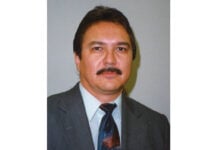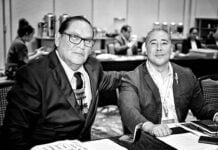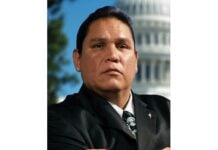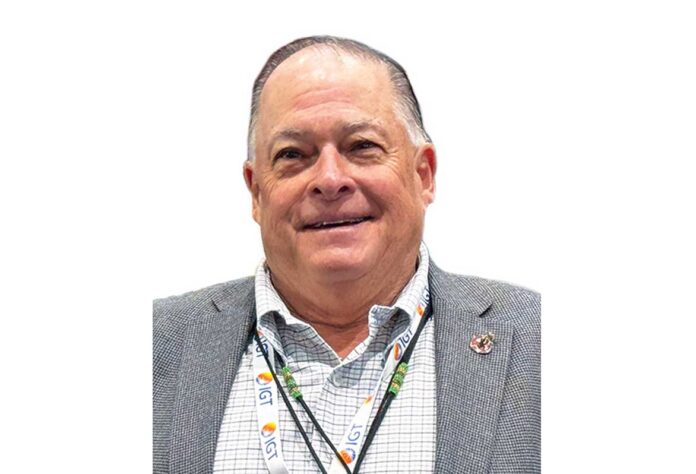by David Vialpando
It is a simple fact that the search for the truth can be an elusive endeavor. Tribal Gaming Regulatory Agency (TGRA) investigators, casino security personnel, and licensing agents often face deception during interviews – whether they’re investigating criminal or regulatory violations or conducting background checks to assess an applicant’s suitability. Developing proficiency in interviewing skills and remaining observant to indicators of deception can greatly help in the search for the truth.
The TGRA’s mission to ensure the integrity of gaming and protection of tribal assets frequently requires investigators, auditors, and licensing personnel to interact with casino employees, license applicants, patrons, and visitors to gather facts regarding matters or incidents under investigation. In certain circumstances, individuals will attempt to conceal culpability, cover for others, or place themselves in the best possible light by providing information that frequently strays far from the truth. How does the TGRA investigator elicit facts from an individual which may potentially harm the person’s interests, reputation, employment, and in some cases, their liberty? The answer is by employing a tried-and-true strategy used by criminal justice professionals for decades to hold those suspected of criminal activity accountable for their violations of law.
Interviews involve gathering information from people that assist the interviewer in assembling an accurate sequence of events or determining the facts regarding a matter under investigation. Motives, emotions, mind tricks, and memory problems may cause individuals to provide prejudicial or inaccurate information, to lie, or to forget facts.
To be effective, consideration should be given to the following when planning an interview:
- Purpose of the interview
- Timing of the interview
- Preparation and gathering information before the interview
- Interview setting and skill level of the interviewer
- Potential obstacles to the conversation
- Ending the interview
In assessing who should conduct the interview, consider the interviewer’s ability to communicate with or relate to the subject; skill in dealing with emotion; the use of reflective listening; and the interviewer’s attitudes, perceptions, and personal bias. The ideal interviewer is a person who can relate to the subject, can utilize emotion as a tool to elicit information, connects with the subject through reflective listening, and who can keep personal attitudes and biases in check. The most important part of the interview starts before the interview even begins. The interviewer should gather as much information as is available regarding the matter under investigation. This assists the interviewer in checking the veracity of the information provided by the subject during the interview and conveys to the subject that the interviewer already knows the answers to the questions they will ask.
The chosen setting for the interview should be free from distraction (e.g., telephones ringing, people interrupting, etc.) and comfortable in temperature and lighting. Seating should be such that the interviewer can sit in front of the subject with a full view of the subject’s person to detect changes in posture, micro expressions, nervous tics, etc. A desk or table between the interviewer and subject not only obstructs the interviewer’s view, but can serve as a mental shield or barrier psychologically reinforcing a subject desiring to withhold information.
The interviewer should avoid taking notes at the beginning of the interview and should maintain eye contact with the subject. The first few minutes should be devoted to establishing a rapport with the subject and determining a baseline for non-threatening behavior. Some subjects will be naturally nervous at the beginning of the interview. The interviewer can calm the subject by exhibiting calmness and asking questions unrelated to the purpose of the interview. This baseline can be used by the interviewer to detect changes in unconscious behavior, also known as indicators of deception, when the line of inquiry approaches an area of sensitivity for the subject.
The interview should be conversational in structure, rather than an interrogation. Ask open-ended questions and elicit a narrative response from the subject. The interviewer might have the subject repeat a sequence of events of interest to the interviewer several times. The interviewer should look for areas of inconsistency or variations in retelling the same purported sequence of events. If the interviewer suspects that the information provided is contrived rather than truthful, the interviewer should have the subject relay the sequence of events from the end back to the beginning. It is very hard for a person to lie backwards. The lack of context and actual memory will cause the deceptive subject to stumble his or her way through the retelling and omit or confuse fictitious details.
It is important that the interviewer end the interview positively by thanking the subject for their time and recollection of the facts. Even if the interviewer suspects that the subject has been untruthful, and he or she has been unable to elicit the truth, the interviewer should end to interview on a positive note. The interviewer may choose to recontact the subject at a future date and lingering animosity would only make the second interview more difficult.
Interviewers should look for verbal signals in responses provided by subjects, specifically how words are organized and how words are used. Subjects relaying the truth will use the fewest words necessary to convey facts. Subjects who are lying will frequently add unnecessary verbiage attempting to conceal their deception. Qualifiers and a lack of commitment are also indicators of deception, such as, “I don’t think I stole any money” or “I didn’t steal the watch but if you tell me how much it was worth, I’ll pay for it.” Interviewers should be suspicious of subjects who are overly polite, too helpful, or who offer unsought information.
Nonverbal signals may telegraph deception to the interviewer in the form of micro expressions, gestures, neuro-linquistic eye movement, vocal inflections, changes in posture, and gestures. Comparing these to the baseline established by the interviewer at the beginning of the interview lets the interviewer know when the interview has entered a sensitive area. A person who shifts their body towards the room’s exit is telegraphing their desire to leave. Exploring these areas and creating a psychological opportunity for the truth by leveraging proximity, encouragement, and support will frequently lead to a breakthrough where the subject admits their wrongdoing or involvement even when the consequences of such admission may be adverse to their interests. Lying is uncomfortable and bothersome to most people, so creating a safe environment for the truth may yield positive results. Exhibiting compassion when the truth is finally revealed can often yield a complete admission of culpability.
There is so much more to learn in conducting effective investigative interviews. To be effective, TGRA personnel and casino security staff should seek training in the techniques highlighted above and practice newly acquired skills in search of the truth.
David Vialpando is Executive Director of the Pala Gaming Commission and Vice-Chairman of Tribal Gaming Protection Network. He can be reached by calling (760) 510-4559 or email [email protected].















































